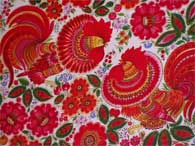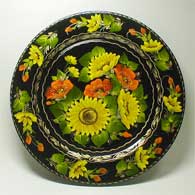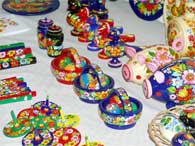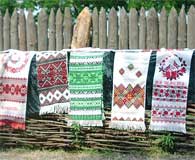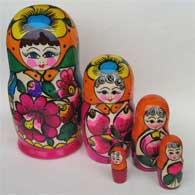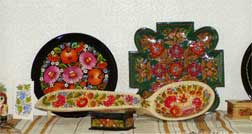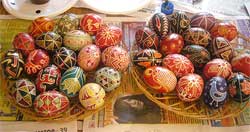History of Lavra (Eng)
-
Geschiedenis van het Icoon (Ned) -
Ukrainian folk art (Eng)-
Interessante boeken
The study, preservation and propagation of traditional folk culture are now one of the top-priority tasks for most countries of European traditional culture. This task is especially urgent for peoples of the countries, where on the verge of the third millennium the traditional culture is not only a historical fact but also the living reality. Ukraine is one of such countries.
The Ukrainian people in the course of centuries-old history created distinctive, artistically unique national art in which their social and aesthetic ideals, patriotism and humanism were reflected. The fine arts were originated on the territory of modern Ukraine as far back as the period of primitive communal system. Formation of Kyiv Rus and the adoption of Christianity promoted the development of culture and of the fine arts in Rus. Together with architecture, the monumental painting achieved a high level of development (i.e., mosaics and frescoes of cathedrals, monasteries and churches throughout Ukraine). Icon painting became the art of broad generalization. In the 16th century, new genres of painting were originated (battle scenes, historical events, portraits and landscapes). The beginning of book printing in Ukraine led to rapid development of the art of engraving.
Distinctive original features are already seen in monumental art of ancient Ukrainian churches. Those traditions of monumental wall painting developed during the next centuries. Churches - stone and wooden - with wall paintings “survived” till the present time. Folk craftsmen, most often anonymous, were the authors of church paintings and icons, iconostases in particular. In their works - icons and big monumental compositions - they reflected realities of life, reproduced peculiarities of world outlook, tastes and thoughts of their environment.
